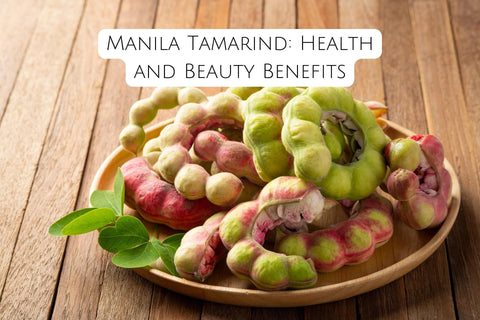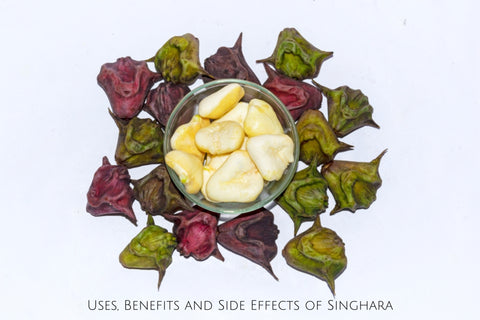Manila Tamarind is a fruit native to the Philippines. It has been used in traditional recipes from the country for centuries.
It is said that it was introduced to Europe by Christopher Columbus and later became a popular ingredient in the Americas. The fruit has many health benefits, including its high vitamin and mineral content, as well as its ability to help with digestion, weight loss, and skin care. The fruit is also used in beauty products due to its rich color and texture.
Manila Tamarind or Monkey Pods, scientifically known as Pithecellobium dulce, are consumed in various ways such as making the sweet & tart pulp part of desserts or foods or adding it to recipes in the form of seed pods. Fruit can be eaten raw, cooked in various dishes, or made into a tangy chutney. The manila tamarind adds a sweet and sour flavour to many dishes, like soups, juices, and salads. It is also loaded with nutritional properties that can improve health.
Nutrition Content in Manila Tamarind:
The small size of the Camachile plant merits its use for patients having difficulty swallowing. In addition to being high in essential nutrients and curative biochemicals, the plant can aid in easing digestion difficulties, boosting metabolism, and generally improving physical health.
The manila tamarind is an ingredient that provides energy, since it contains a significant number of calories and delivers carbohydrates too. It's also a great source of protein and has an amazing list of vitamins & minerals that help to improve your personal metabolic functions. Cucumber has a relatively low caloric content and contains a lot of proteins, dietary fibers, water and vitamin C. It is an easy source of hydration so it will assist in regulating your appetite and enhancing digestion processes while having the ability to help fight common colds.
The abundance of B vitamins promotes good digestion and brain function. Vitamin B6 supplements are known to support healthy aging, memory, mood, and concentration. These tiny seed pods are loaded with all sorts of minerals that are integral to your body. These nutrients fortify all the bones, joints, and iron for the cells in your body. This helps them to produce healthy blood cells and regulates blood flow evenly throughout the system.
Plus, the manila tamarind tree has a lot of anti-inflammatory & anti-diabetic capabilities. Polyphenols, tannins, and other bioactive compounds keep diseases like diabetes in check, protect the liver from toxins, and provide other benefits like improving skin
Health Benefits of Manila Tamarind
Manila Tamarind is a type of fruit that is native to the Philippine Islands.
Health benefits of Manila Tamarind
- It has anti-inflammatory properties which help in reducing various types of pain and inflammation
- It has anti-diabetic properties which help in reducing the risk of diabetes by regulating blood sugar levels
- It can improve digestion and reduce constipation, diarrhea, bloating, gas, and indigestion
- It can help in reducing inflammation and joint pain
- It has anti-tumor properties
- It reduces inflammation and joint pain
- It can regulate blood sugar levels which can reduce the risk of diabetes
- It is a rich source of antioxidants which prevent many diseases like cancer, Alzheimer's disease, and asthma
- It provides solutions to toothaches, sore gums, and mouth ulcers.
- Manila tamarinds have high levels of vitamin C which boosts the immune system and reduces phlegm.
- Our extract is used to cure dysentery, chronic diarrhoea and more.
- Its high thiamine content, combined with a metabolism-boosting effect and effects on mood, contribute to an effective stabilizing of one's sense of stress.
- Manila tamarind fruit has been found to have strong anti-ulcer activity. It is comparable to the standard drug, omeprazole.
- A study published in a reputable journal found that fruit extracts protected the liver from oxidative stress.
- Curing your skin can be easy with the right products. Slow down the ageing process and lighten your skin with anti-aging cream that removes dark spots and acne.
Ways to Add Manila Tamarind to the Diet:
Manila Tamarind has been used for centuries in the region’s cuisine. It is a low-calorie fruit that is high in fiber and rich in antioxidants. Unlike many other fruits, it can be eaten raw or cooked. The pod is a sweet and sour pulp used as a base for juices with sugar and water. It's most often eaten raw but can be added to some curries or chutney. This is also used in traditional Indian dishes like usili or curry.
The following are some of the ways you can add Manila Tamarind to your diet:
- Add it to your morning smoothie
- Use it as a topping for fruit salad
- Roast and grind it into a powder for use as an ingredient in sauces and dips
- Combine it with honey, yogurt, and almonds for a healthy snack
- Add it to your homemade pizza dough
- Mix it into your ice cream
Traditional Home Remedies
Irritable Bowel Syndrome: Brew two cups of manila tamarind in a cup. Leave it to boil for ten minutes and drink it up daily. It has been clinically proven to help with digestion, reduce stomach cramps, and alleviate flatulence.
Brew two cups of manila tamarind in a cup. Leave it to boil for ten minutes and drink it up daily. It has been clinically proven to help with digestion, reduce stomach cramps, and alleviate flatulence.
Indigestion: Boil a few Manilas tamarind leaves in 150ml of water for 5 minutes, adding salt to the mixture throughout the day. Drink this concoction over the course of one-to-many days to improve digestion.
Boil a few Manilas tamarind leaves in 150ml of water for 5 minutes, adding salt to the mixture throughout the day. Drink this concoction over the course of one-to-many days to improve digestion.
Toothache: Tooth pain and cavities can be treated by infusing tamarind leaves with water for about 20 minutes and then straining it. Drink this liquid over a period of 30 days.
Tooth pain and cavities can be treated by infusing tamarind leaves with water for about 20 minutes and then straining it. Drink this liquid over a period of 30 days.
Fever: It's time to put a tradition to rest by drinking tahimarind bark decoction just when you are feeling sick or when your fever has returned. Tamarind is a traditional remedy for curing fever- it relieves the symptoms and helps prevent the fever
It's time to put a tradition to rest by drinking tahimarind bark decoction just when you are feeling sick or when your fever has returned. Tamarind is a traditional remedy for curing fever- it relieves the symptoms and helps prevent the fever
Culinary Uses
The flesh around the seeds can be eaten raw, cooked, or made into a refreshing beveragem. Seed pods contain a sweet and tangy pulp which is used in making various meat dishes as well as drinks. They are also used in various curries, raw food, and desserts.




Comments (0)
There are no comments for this article. Be the first one to leave a message!